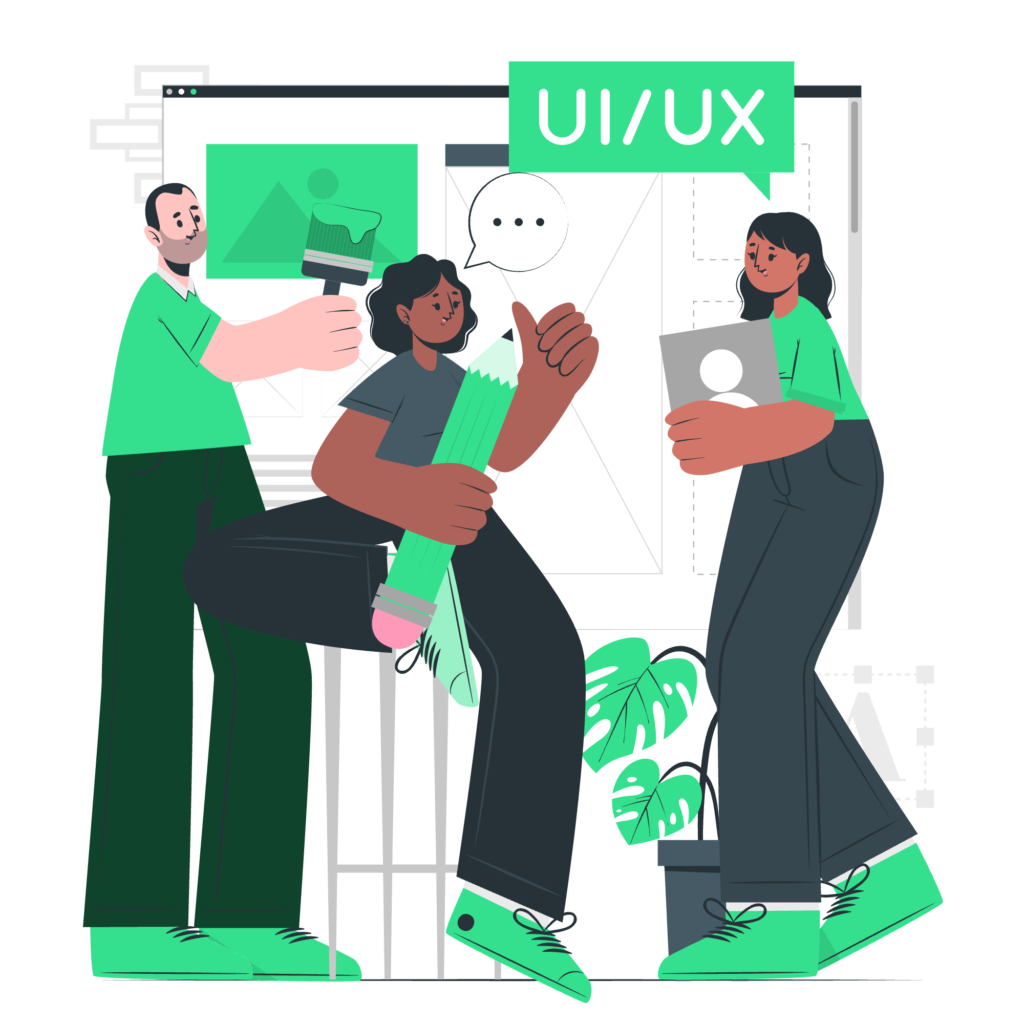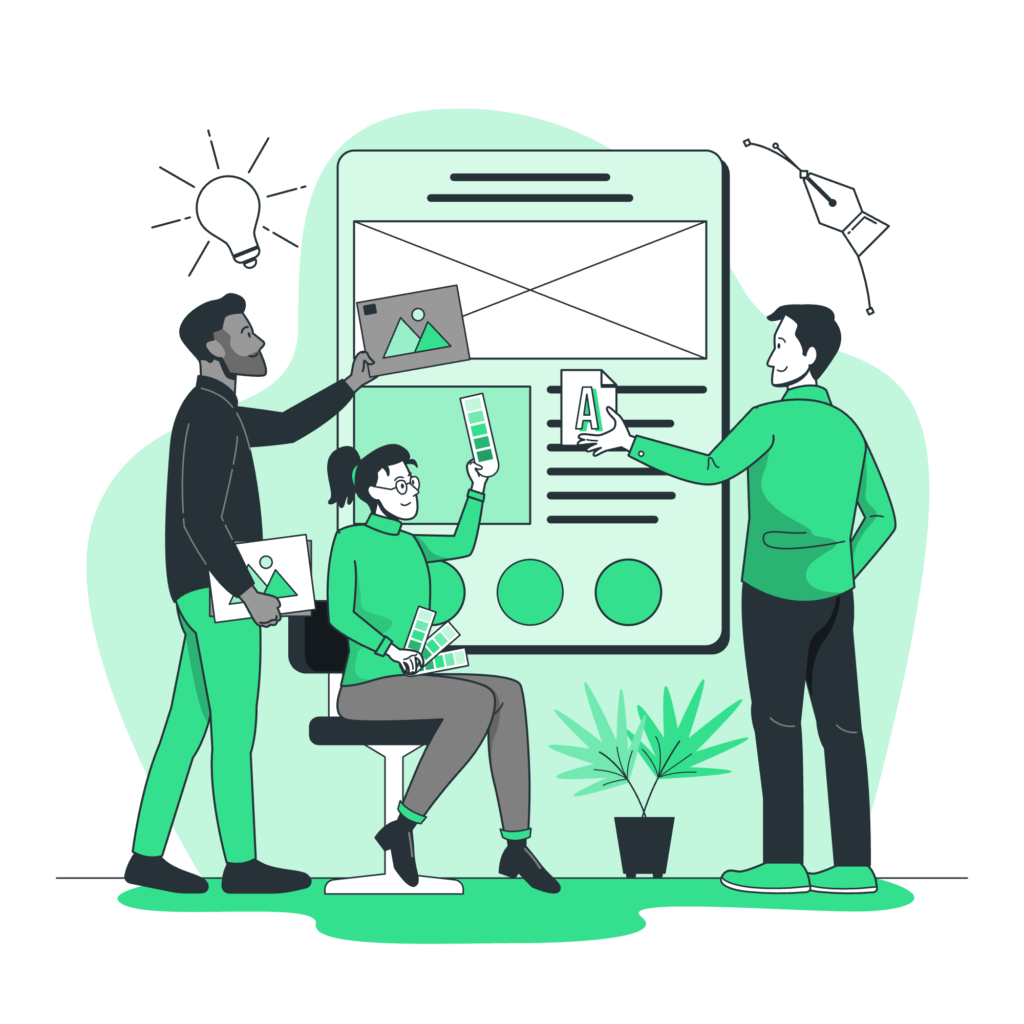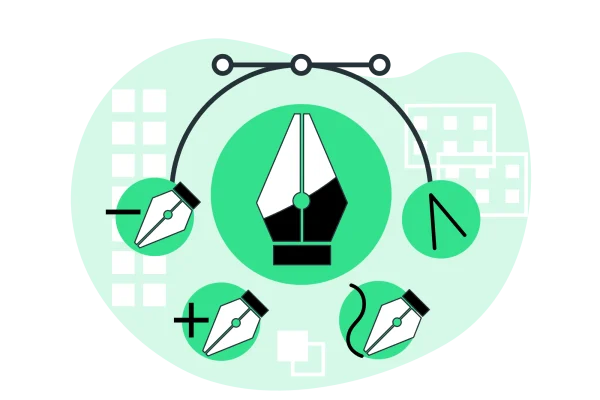Ever heard of UI/UX before? It’s also quite likely you are not aware of what exactly it is. We are going to answer that question and many others in this comprehensive guide. UI and UX design stand as the pillars shaping user interactions and satisfaction. We shall unravel the intricacies of UI/UX design. From understanding the roles of UI/UX design to exploring the best tools available, this guide aims to be your go-to resource for navigating the vast landscape of UI/UX creation.
At its core, UI/UX design revolves around crafting digital experiences that seamlessly blend functionality and aesthetics. UI or user interface, refers to the visual elements users interact with, such as buttons, icons, and navigation menus.
On the other hand, UX, or user experience, encompasses the overall feel and satisfaction users derive from a product or service. Together, they play a pivotal role in ensuring a website or application is not only visually appealing but also intuitive and user-friendly.

Exploring the visual components that contribute to an effective user interface is key to mastering UI/UX design. Visual elements include color schemes, typography, imagery, and layout. Each element plays a crucial role in conveying information, establishing brand identity, and guiding users through their digital journey. By understanding the nuances of these elements, designers can create interfaces that not only look appealing but also enhance the overall user experience.
UI/UX design goes beyond aesthetics; it’s about creating a seamless and enjoyable journey for users. From the moment a user lands on a website to the completion of a desired action, UI/UX design influences every step of the user’s digital experience.
It’s only logical to want to know how to go about using the tools that are available after learning and understanding UI/UX design. Luckily there’s an abundance of options when it comes to that ranging from free UI/UX design software to feature-rich paid tools.
For those just starting, free UI design editors provide an accessible entry point. These tools often come with user-friendly interfaces, enabling designers to experiment with layouts, color schemes, and typography without a steep learning curve. Embracing such tools is not only cost-effective but also empowers aspiring designers to hone their skills before delving into more advanced applications.
Moving beyond free tools, a curated selection of UI/UX design tools awaits those seeking a more robust and feature-rich experience. These tools cater to various aspects of the design process, from wireframing and prototyping to collaboration and user testing. Each tool brings its unique strengths, allowing designers to choose based on their specific project requirements and personal preferences.

Fundamental Principles such as consistency, hierarchy, and simplicity serve as guiding lights, ensuring that designs not only meet aesthetic standards but also enhance user understanding and navigation.
Understanding the diverse types of UI/UX design is equally essential. From web design to mobile app development, each type requires a nuanced approach to address the unique challenges and opportunities presented by different platforms. By acknowledging these distinctions, designers can tailor their creations to suit the specific needs of their target audience.
To be fair, it is more complicated compared to its more straightforward counterpart, UI (User Interface). What does UX stand for? Simply put, user experience. It involves how the user experiences the product (whatever that may be) and how the overall vibe feels.
Meanwhile, User Interface refers to the point of interaction between a user and the product. This includes icons, buttons, and more.
Imagine UI without UX as a recipe without proper ingredients—just like a chef trying to cook without the right elements. On the flip side, UX without UI is akin to having all the ingredients but lacking a clear recipe or cooking instructions. A successful product journey starts with a thoughtful UX, followed by a well-crafted UI.
It’s crucial to grasp that UX and UI are interconnected; you can’t effectively have one without the other. However, being skilled in UI design isn’t a prerequisite for a UX designer, and vice versa. These are distinct roles with separate processes and responsibilities.
Related: Dark Mode UI Design: Tips And Tricks
The following are some of the most critical elements of UIUX design details. While there are many other factors to consider, these are the most essential.
Imagine user personas as make-believe sketches of your ideal audience. They come to life through exploring your customers’ details like age, interests, and other crucial data.
User flow is the journey users take, from the start to the finish of engaging with your product. It covers where they click, how long tasks take, and other important bits.
Navigation is like the GPS of your product, guiding users smoothly between different pages or sections. It’s not just about looks; it’s how users get around.
Interface is all about how users interact with different parts of your product. It’s not just visual – it’s about making sure everything works smoothly.
Conducting UX/UI tests is like putting your product through a trial run. It’s about checking how users move through different parts, making sure it’s both visually appealing and functions well.
Shifting the attention to the practical side, let us look at some options that balance functionality and affordability. Accessible tools empower designers, fostering creativity without financial constraints.
User interface designing tools, discussed in detail, offer insights into the features and capabilities that streamline the UI design process. From creating wireframes to refining pixel-perfect designs, these tools cater to the diverse needs of UI designers across the spectrum.
There are many UIUX design tools free to use for all. The ones listed below are among some of the best –

A vector graphics editor and digital design tool primarily used for UI and icon design. It has a free plan that can be used for non-commercial projects.
A user experience design software developed and published by Adobe Systems, it has a free plan for personal use.
A browser-based interface design tool, it has a free plan with limited features.
A digital product design platform that allows designers to create interactive and responsive prototypes, it has a free plan for personal use.
A wireframing, prototyping, documentation, and collaboration tool for web and mobile applications, it has a free plan for personal use.
A raster graphics editor for photo and image manipulation, it has a free plan for personal use.
A vector graphics editor, it has a free plan for personal use.
A rapid wireframing tool that focuses on creating user interfaces quickly and easily, it has a free plan for personal use.
Dash simplifies UX design with an easy interface, interactive features, and collaborative capabilities for efficient and engaging digital experiences.
A free and open-source image editing tool that can be used as a resort to Adobe Photoshop.
Related: Top 15 AI Tools For UI UX Design For Beginners To Master
The allure of anything free is hard to resist, and that includes free UI/UX design tools. Ever heard of the saying that goes, ‘“nothing in this world is free”? Using free UI/UX design software can be awesome, but it’s important to know about a few drawbacks. These tools provide essential features for creating visually appealing and functional designs without incurring costs. Despite the good they offer, it’s important to consider where they’re lacking—the features might be a bit limited compared to the fancier, paid options. You might miss out on some cool stuff for your projects.
Another thing to keep in mind is not to expect the same level of customer support you’d get with premium tools. If you run into issues, you might have to rely more on online forums and your own troubleshooting skills.
Then there’s the concern about security and privacy. Free tools might not be as bulletproof when it comes to keeping your design info safe. So, if your project involves sensitive stuff, it’s worth being a bit cautious. Also, note that the limitations of free plans may vary. Some of these tools are free to use for non-commercial projects, while others have restrictions on the number of projects or features you can use.
Oh, and updates – that could be a bit hit or miss with free tools. They might not get as many updates as the fancier versions, which could cause some headaches down the road.
Lastly, there’s the risk of a free tool getting the plug pulled. They might not stick around forever, or they could get swallowed up by another company. That could be a real bummer, especially if you’re in the middle of a project.
So, while free UI/UX tools are great for saving some bucks, just keep these things in mind before diving in
We aim to equip both novice and seasoned designers with the knowledge and tools essential for successful UI/UX design. By unraveling the layers of visual elements, understanding the roles of designs, and exploring the vast array of design tools, readers can embark on a journey of continuous learning and improvement.
Whether you’re a UI/UX designer shaping the digital future or an enthusiast exploring the intricacies of design, this guide serves as a roadmap to navigate the dynamic landscape of UI/UX creation. As the digital world evolves, so too will the principles and tools of UI/UX design. Here’s to a world where every user interface is a masterpiece, and every user experience, is a well-received encore. Happy designing!
This site is protected by reCAPTCHA and the Google Privacy Policy and Terms of Service apply.